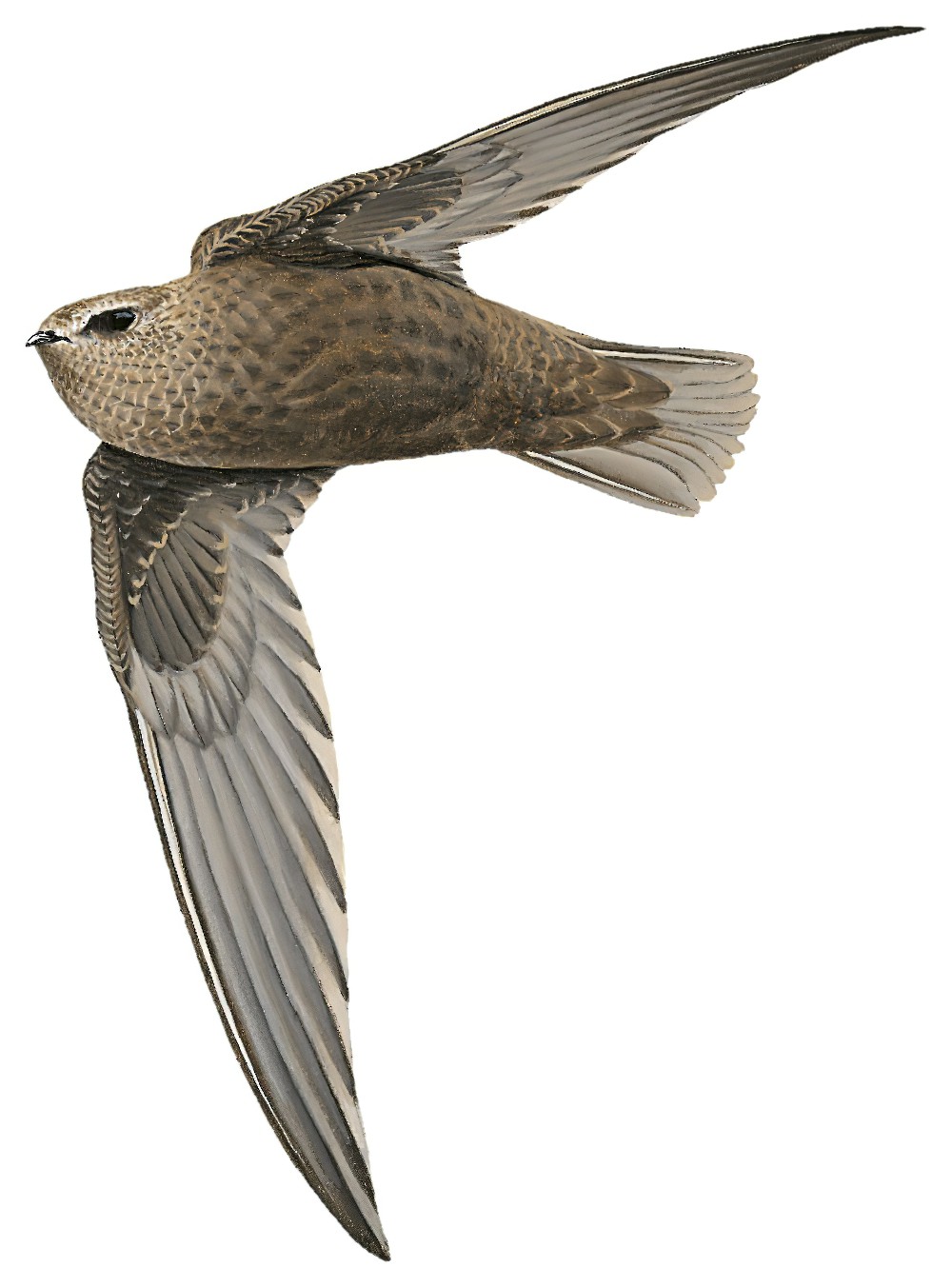Great Dusky Swift / Cypseloides senex

Great Dusky Swift
SCI Name:
Protonym: Cypselus senex Pl.Col. livr.67 pl.397
Taxonomy: Caprimulgiformes / Apodidae / Cypseloides
Taxonomy Code: grdswi1
Type Locality: Brazil.
Author: Temminck
Publish Year: 1826
IUCN Status: Least Concern
DEFINITIONS
CYPSELOIDES
(Apodidae; Ϯ Sooty Swift C. fumigatus) Genus Cypselus Illiger 1811, swift; Gr. -οιδης -oidēs resembling; "α) Hemiprocne sensu strictiori, seu Cypseloides. Schwanz gerade oder nur sehr schwach (gabelig) ausgeschnitten; die äußeren Steuerfedern nach der Spitze zu nicht auffallend verschwälert. Gefieder von trüber Färbung. Lauf von mittelmaßiger Länge oder ziemlich lang. N) Mit geradem Schwanze. Südamericaner. Senes seu Hemiprocne proprie sic dictae. Hem. fumigata = Cypselus fumigatus Jo. Natt. (Berliner Mus., Cypselus, No. 12, Paraguay. Von Jo. Natterer gegeben. Mit ausgefärbtem Gefieder.— No. 13. Brasilien. Von Müller geliefert. Ein jugendliches Individuum). ... In dieselbe Abtheilung gehört der von Temm. pl. col. 397.) beschreibene Cypselus senex Temm." (Streubel 1848); "Cypseloides Streubel, Isis von Oken, 1848, col. 366. Type, by subsequent designation, Hemiprocne fumigata Streubel. (Sclater, Proc. Zool. Soc. London, 1865, p. 614.)" (Peters, 1940, IV, p. 242).
Synon. Acanthylops, Chaeturellus, Nephoecetes.
cypseloides
Genus Cypselus Illiger 1811, swift; Gr. -οιδης -oidēs resembling (i.e. with rapid flight); "Atticora cypseloides Heugl. ... Lebt in Central-Abyssinien auf 6—8000' an Flussufern und auf Wiesen gemeinschaftlich mit Cotyle paludibula und zeichnet sich durch reissend schnellen Flug aus" (von Heuglin 1862) (syn. Pseudhirundo griseopyga).
senex
L. senex, senis old person (i.e. grey-haired, white-haired, querulous).
Senex
L. senex, senis old person (i.e. querulous, white-haired).
● (syn. Circaetus Ϯ Short-toed Eagle C. gallicus) "I, therefore, propose to retain Spix's genus, Milvago, for all those Polyborinæ which possess rounded nostrils with an elevated bony tubercle in the centre. They were once considered to form three distinct genera, viz. — Milvago, Spix. (Polyborus, Vieill. Haliaëtus, Cuv. Aquila, Meyen.) — Senex, Gray. (Circaëtus, Less.) — Phalcobænus, D'Orb. but a careful comparison of the several species, shows a regular gradation in structure from one to the other, which induces me to consider them as only forming two sections of one genus" (G. Gray in Darwin 1839).
● (syn. Phalcoboenus Ϯ Striated Caracara P. australis) "SENEX, Gray. — Like the former [Milvago], but of a larger size, with the bill longer, and the culmen less elevated, but rounded. S. Australis, Gray. ... My brother proposed to place the genus Senex and its allies with the Noble Falcons, as they have the same formed nostrils; and he now considers that it shows at least an affinity to the birds of that group" (J. Gray in Jardine & Selby 1839); "Senex J. E. Gray, in Jardine and Selby, Ill. Orn., (n. s.), Part 5, text to pl. 24 [p. 2], 1839—type, by monotypy, Falco australis "Latham" [= Gmelin]." (Hellmayr & Conover, 1949, XIII, 275).
UPPERCASE: current genus
Uppercase first letter: generic synonym
● and ● See: generic homonyms
lowercase: species and subspecies
●: early names, variants, mispellings
‡: extinct
†: type species
Gr.: ancient Greek
L.: Latin
<: derived from
syn: synonym of
/: separates historical and modern geographic names
ex: based on
TL: type locality
OD: original diagnosis (genus) or original description (species)












